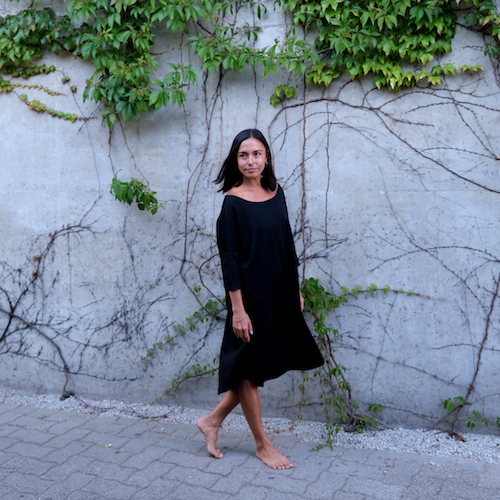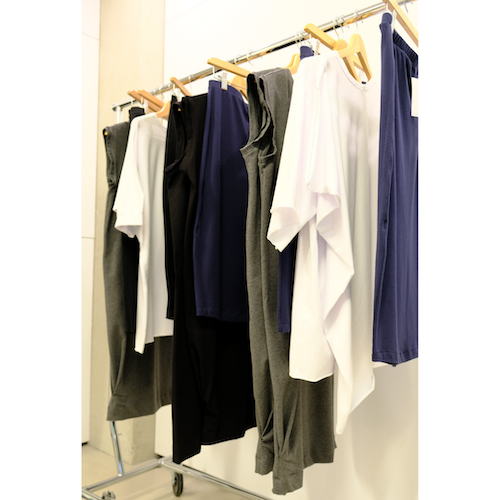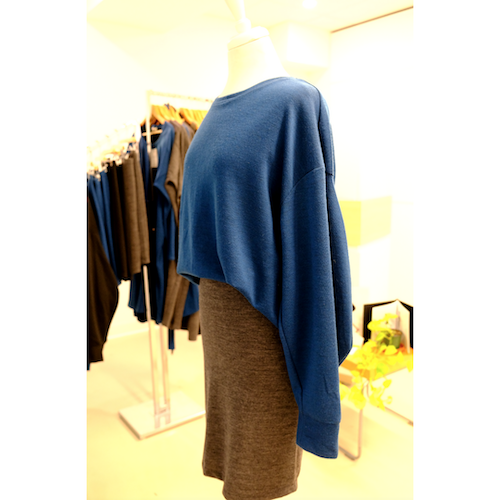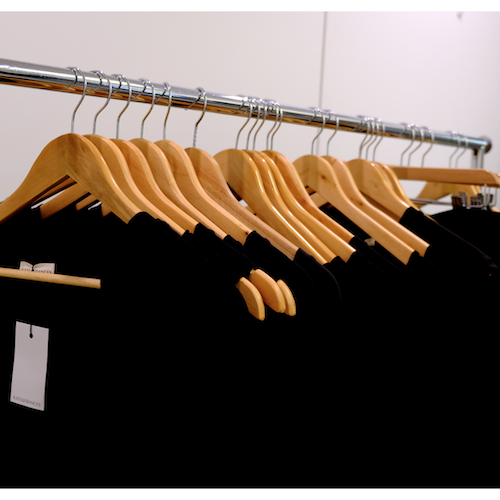Ethical & Sustainable Fashion | What Does This Even Mean?
Aug 10, 2021

Sustainability and ethical fashion brands : just a marketing ploy or do they stand behind their words with action?
So, what is a sustainable and ethical fashion brand?
Are there universal criteria for brands to adhere to?
Why does one brand state they are sustainable by using recycled materials, but another brand states they are sustainable because they are committed to reducing emissions?
Why does one brand state they are ethical by only using garment factories that adhere to their standards of a safety and do not use child labor, but another brand states they are ethical because they pay their garment workers a livable wage?
And why is it so hard to find information about brands supply chains?
How do I really know who makes my clothes?

This is what I have seen in the industry, both for Canadian and global sustainable brands.
Please note, this is my experience and viewpoint.
Sustainability and ethical fashion have been widely used buzz words in the fashion industry for the past decade or so.
To me, it seems longer than just 10 years as I’ve been working within the fashion industry for the past 20 years and it’s a topic that has been talked about, reports and marketing plans created to cater towards, but not a lot of transparency.
The words sustainability and ethical fashion seem to go hand in hand for a lot of brands as well.
And the questioning of ethical, sustainable fashion and the hashtag, #whomademyclothes really came into the spotlight in April, 2013 after the Rana Plaza in Bangladesh collapsed, killing 1,132 and injuring over 2,500 garment workers. The documentary, The True Cost showed a transparency that is rarely seen within the fashion industry and is well worth watching.
What many in the industry had known about the conditions garment workers were having to work under and their rate of pay, this horrendous disaster drew the attention of the general public and media to the fashion industry and in particular, to fast fashion brands.
So let’s dive into 5 ways that brands state that they are sustainable and/or ethical.
1. The Use of Recycled, Deadstock and Organic fabrics
So, what are recycled, deadstock and organic fabrics? Why do brands shout from the top of roof tops that they use these fabrics? Aren’t all fabrics created equal?!
Let’s break each category down a little.
Recycled Fabrics:
These are new fabrics that have been created using fibres that have been recycled and repurposed. Let’s use the example of ocean plastic. This can be recycled and processed to create new yarns, then woven or knitted into a new fabric. This is common in athleisure wear products such as tights (or leggings) or woven shorts. Recycled polyester is also making its way into mainstream fashion.
There is debate regarding the recycling process of the raw material (for example, ocean plastic) and how it is processed into new yarn. There is energy used and waste created during this process that some say, may outweigh the benefits. The ocean plastic is cleaned, broken down into small chips, melted, extruded and spun into new yarn. The ocean plastic may also require virgin plastic chips to be added to ensure the end product has the characteristics and properties required in the finished fabric.
Deadstock Fabrics:
These are fabrics that have been purchased (usually by large fashion companies) in excess and the brand is looking to sell these on instead of sending them to the landfill. This fabric is not flawed or damaged, just in excess.
This provides an opportunity for smaller brands to purchase fabrics at a slightly discounted price.
For smaller brands it means that they can get their product into market quicker, and also not have to wait on the long lead times that some fabric mills have in place.
Organic Fabrics:

This applies to natural fibres such as cotton, wool, linen and silk.
To state that a fibre or fabric is organic, it needs to meet certain criteria. For the cotton plant this means not having exposure to certain fertilizers and pesticides in the soil or sprayed onto the plant and for wool, the sheep don’t have exposure to certain fertilizers and pesticides in their feed or environment.
The reason organic fabrics are more expensive is because there is a lot more work involved in creating the raw cotton or raw wool. It is more labor intensive than using commercial chemicals. OEKO-TEX® has created a certification process and standards for fabric mills to adhere to.
2. Zero Waste Pattern Drafting
Pattern drafting occurs once the designer has created the sketch and it then needs a template in order to replicate the garment.
Based on the design, the style lines may be numerous due to the curves on the body and the style lines required by the designer. This creates waste when cutting the template in the fabric.
With zero waste pattern techniques, the waste is eliminated altogether or significantly reduced. The pattern template pieces can be butted up next to each other with little to no waste.
In order for the style to fit the curves of the body, darts, pleats and tucks are added. This technique is not widely used within the industry as yet.
3. Small batch production:
The name says it all! Instead of cutting hundreds of garments at once, small batch production either cuts to order or cuts smaller numbers of garments at once.
This is typically what happens when a small design brand purchases deadstock fabric. It could also mean that the brand cuts around 7,500 pieces of the same style.
Do your research.
4. Livable Wage:

A livable wage means just that. It’s dependent on the city and/or country that the garment workers live. A lot of workers spend between 60-80 hours a week and take home $300usd per month, according to the Garment Work Center. And that’s in the USA.
The True Cost, estimates that less than 2% of the garment workers earn a livable wage. Plus there is the threat of being fired if they refuse to work overtime.
5. Safe Working Conditions:
Ensuring the building meets codes and standards and are regularly maintained and monitored. Ensuring the room temperature is set at a comfortable level, and that the workers are not exposed to harmful chemicals or have the equipement to protect themselves. Work places are not overcrowded and there is no threat of physical violence.
There are a lot of other ways in which brands state that they are sustainable and/or ethical.
It’s down to you, the consumer to make the decision as to whether a brand is sustainable-enough for you.
It’s aligning your values to the brands values.
A clear sign to see if they are sustainable is, if they back up their claims with evidence. If they can, they will have this on their home page. But also check out their About Us page and if in doubt, use the Contact Us form. If they truly are sustainable, they won’t be hiding anything.
Don’t be afraid to reach out and ask.
And sometimes no answer is an answer.
Happy shopping!
Posted in ramblings
